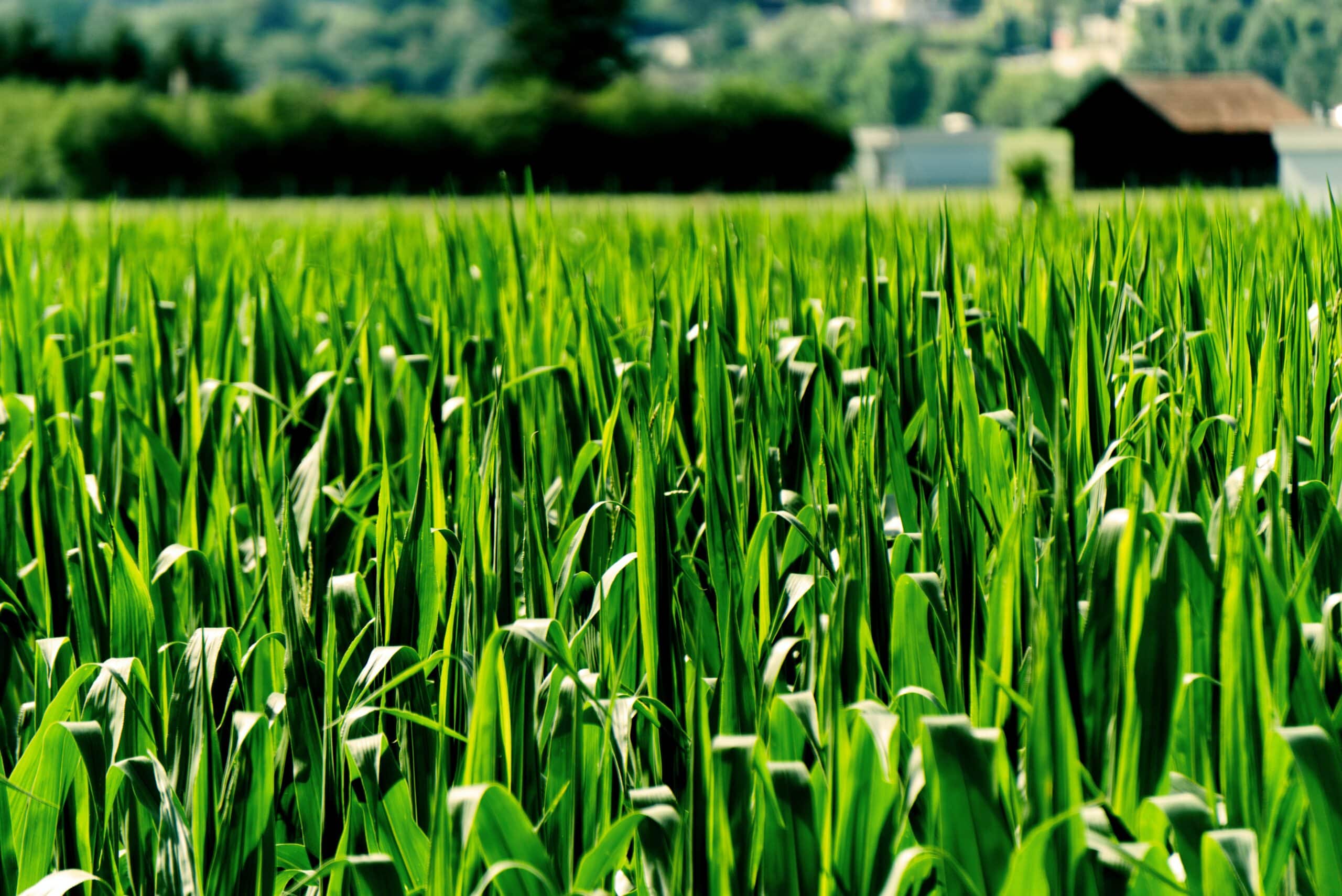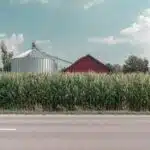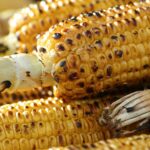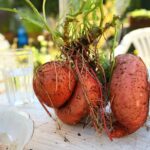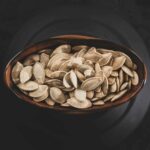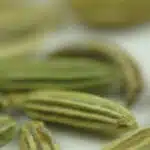Growing corn can be a rewarding experience, allowing you to enjoy the sweet taste of homegrown vegetables right in your own backyard. But for those who are new to gardening, growing corn can seem like an overwhelming task. Fortunately, with the right know-how and tools, anyone can learn how to successfully grow corn. This article will provide all the beginner tips and tricks needed to get started on your corn crop today.
Whether you’re a novice gardener or experienced green thumb, this guide is sure to provide valuable insight into creating your own sustainable garden. We’ll cover everything from selecting the right varieties of corn, planting techniques and even harvesting methods so that you can reap a bountiful harvest come harvest time! With just a little bit of effort, you too can enjoy the fresh flavor of homegrown corn.
Gardening is an incredibly rewarding hobby that not only provides delicious food for families but also helps contribute to sustaining our planet’s resources. By following this guide, you’ll be one step closer to being able to create a productive garden that provides nourishment for yourself and others around you. So let’s get started and learn how to grow corn; it’s easier than ever before!
Choose The Right Location To Plant Corn
Growing corn is a rewarding experience that can be incredibly fulfilling. According to the National Agricultural Statistics Service, in 2019, there were almost 14 million acres of land dedicated to growing corn in the United States alone. To ensure you have a successful crop, it’s essential to choose the right location.
When selecting a spot for your corn patch, pick an area that gets at least six hours of direct sunlight daily and has good air circulation. Make sure the soil is well-drained with a pH level between 6 and 7. Additionally, plan for enough space for your plants to grow as each stalk typically needs 24 inches of space between them.
Once you’ve determined where you’d like to plant your corn, take some time to check the temperature of the soil. Corn thrives when planted in warmer soil with temperatures around 60°F or higher. If possible, wait until the mid-spring months when temperatures are more consistent before planting your corn seeds. By doing this, you’ll increase your chances of getting an abundant harvest from your garden come fall!
Prepare The Soil For Planting
Growing corn is a rewarding experience that anyone can achieve. To get started, the second step is to prepare the soil for planting. This means ensuring your soil has the correct nutrients and structure for corn to thrive.
To ensure your soil is ready for planting, it’s best to add organic matter such as compost before sowing seeds. Doing so will help create a looser structure and provide additional nutrients for growth. Additionally, you should also test your soil’s pH levels to make sure it’s between 6-6.5 on the pH scale – this will ensure your corn is able to absorb all of the necessary minerals from the soil.
Once you’ve prepared your soil and tested its pH levels, it’s time to select the type of corn that’s right for your garden. Different varieties may require different types of soil or have different growing requirements, so be sure to choose one that fits with your environment and goals.
Select The Type Of Corn To Grow
While planting corn may seem like a daunting task, it can be a great entry into the world of gardening. Selecting the right type of corn to grow is key to success.
Before you get started, consider your location and climate. Different types of corn are adapted to different climates and soil composition. Sweet corn is best grown in warm climates with rich soil, whereas popcorn is better suited for drier, cooler climates. Deciding which type of corn you want to grow will help guide your selection process.
Once you have an idea of what type of corn is ideal for your location, research specific varieties that produce the highest yield or contain desirable characteristics such as flavor or texture. Consider also the length of time each variety takes to mature; some sweet corns mature faster than others while popcorn needs more time to reach maturity. Asking questions at local nurseries and gardening centers can provide useful insights when selecting the right type of corn for growing in your garden.
When you’ve made your selection, take the next step towards harvesting a successful crop by preparing the soil for planting!
Plant Corn Seeds
Now that you have chosen the type of corn to plant, it is time to get planting. Planting corn seeds is not difficult at all. All you need is a spot in your garden that gets plenty of sun, some soil and manure, and, of course, the seeds.
Start by breaking up the soil in your garden bed where you want to sow your corn seeds. Adding some compost or manure will help give the soil a nutrient boost for the growing plants. Then use a hoe to create small furrows about one inch deep. Place the seeds about three inches apart from each other along the furrow and cover them with soil.
Watering is an important step when it comes to keeping your plants healthy and growing fast. Make sure to give your corn plants enough water during key moments like germination, flowering and pollination. Don’t forget to water regularly and evenly throughout their growth period for maximum yield!
Water The Corn Plants
Watering the corn plants is an essential step in the growing process. Wicking moisture to their roots, it’s a crucial component of their success. It’s important to provide a generous amount of water, with consistency, for optimal growth.
When watering your corn plants, be sure to provide enough to thoroughly moisten the soil. It should reach the bottom of the root system and not just wet the surface. Once you’ve given them a good soak, wait until the topsoil dries out before giving them another drink. This will help prevent fungus or bacterial growth on their stalks and leaves.
Although it’s important to keep your corn plants watered, be aware that over-watering can also cause problems. Too much water can lead to too much nitrogen in the soil which can negatively effect the growth and flavor of your crop. So make sure you monitor your watering schedule carefully and adjust as needed for best results!
Fertilize The Corn Plants
Have you ever wondered how to ensure your corn crop will thrive? Fertilizing the plants is an essential step in the process. But what does this involve? Let’s explore the basics of fertilizing corn plants.
Fertilizing corn plants should be done to give them the right balance of nutrients they need for healthy growth. Here are a few key tips:
• Choose a fertilizer that’s specifically designed for corn or other grains, such as 10-10-10. • Apply the fertilizer according to package directions when the stalks are about knee-high and again when tassels form. • Adjust according to soil conditions; sandy soil needs more frequent fertilizing than clay soils.
Using a fertilizer with nitrogen, phosphorous, and potassium can help your corn reach its maximum potential. It’s important to monitor your soil quality and adjust accordingly in order to provide your crop with the best chance at success. By following these steps, you can rest assured that you’re doing all you can to provide your corn with a proper foundation for growth and nourishment.
With proper fertilization in place, it’s time now to focus our attention on another important aspect of growing corn—weed control!
Weed Control For Corn
Weeding is one of the most important steps in growing corn. According to the National Corn Growers Association, weeds can cause losses of up to 70% in corn yields if left unchecked. So, it’s important for any aspiring gardener to understand how to keep their corn crop safe from weeds.
One effective way to control weeds is through a combination of physical and chemical methods. Physical weeding can be done manually or with tools like hoes, shovels, and rakes. This method is best for small areas and those that have already been seeded with corn. Chemical weed control involves applying herbicides directly onto the soil or plants to kill off unwanted weeds before they take over your corn crop.
It’s also important to monitor your crop regularly for new weed growth so you can quickly address any infestations before they become unmanageable. Proper monitoring should include both visual inspections and soil testing since some weeds are harder to spot than others. With early detection and proper preventative measures, you’ll be able to keep your corn crop healthy and productive all season long!
Staking And Supporting Corn Plants
As the summer sun begins to warm up, corn plants begin to reach towards it with enthusiasm. With each stalk growing rapidly, staking and supporting these plants can become an essential step in their growth. Like a winding road that leads to a destination, this guide will help you safely arrive at a bountiful harvest of sweet corn.
Staking and supporting your corn plants is essential for their growth and health. This can be done by using wooden poles or stakes around the plant. Depending on how tall your corn stalks grow, you may need two or more stakes per plant, making sure they are securely fastened into the ground. Additionally, tying the stalks together with strings or twine will help keep them upright and steady in windy conditions. It’s also possible to use netting or cages to support your corn plants if needed.
When it comes time for harvesting, don’t forget to take off any staking material before cutting down the ears of corn. To prevent damage to the ears while removing them from the plant, make sure you cut them off with pruning shears rather than pulling them off by hand. With proper staking and support in place, your corn crop should yield healthy ears of sweet corn ready for harvest! Taking care when managing insects and pests is also important for a successful harvest…
Managing Insects And Pests
No matter how carefully you tend your corn plants, they may still be vulnerable to pesky insects and pests. To manage these critters while keeping your corn as healthy as possible, it’s important to know what pests to look out for and how best to address them.
Aphids and earworms can cause major damage if not kept in check. The former can suck the sap of the plant, weakening it over time, while the latter can burrow into the ears of unripe corn, making them inedible. To prevent or remove these pests, use a combination of insecticidal soap or horticultural oil.
Weeds can also compete with your corn plants for essential nutrients and moisture in the soil. It’s important to keep weeds at bay by using a hoe or other tool to pull them out regularly. Additionally, you may want to cover areas around your plants with mulch or plastic sheeting so that weeds don’t have an opportunity to take root.
By being diligent about managing insects and pests, you’ll ensure that your corn is able to grow strong and healthy for harvesting season. With these tips in mind, you’ll be prepared for whatever comes your way! Now let’s move on to discussing some tips for harvesting corn.
Tips For Harvesting Corn
Harvesting corn? Who would have thunk it! Sure, you’ve heard of the old adage ‘knee high by the 4th of July,’ but you thought it was just a saying. Not anymore! It’s time to start harvesting your hard-earned ears of corn. Here are some tips for making sure you get delicious sweetcorn every time.
First things first, be prepared. In order to ensure that your harvest is as bountiful and sweet as possible, make sure to check on your crop at least twice a week. That way, you can be sure that no pesky insect or disease is taking away from your hard work.
Second, use an appropriate tool when harvesting. A sharp knife or garden shears will do the job nicely without damaging the ears of corn. Don’t forget to wear gloves when handling the plants to avoid getting poked and prodded!
Finally, store your harvested corn properly. The best way to preserve its flavor and texture is by quickly cooling it down and keeping in a cool, dry place for up to two weeks- ideally in an airtight container or plastic bag. With these tips in mind, you should be well on your way to having sweetcorn year round!
How To Store Corn
Storing corn correctly is essential for preserving its freshness, but one might wonder if it’s worth the effort. After all, with so many other steps to take in the process of growing corn, why bother? The answer is simple: the quality and flavor of your crop depend on it! With proper storage techniques, you can ensure that your corn will remain fresh and delicious for weeks after harvest.
One of the most important things to consider when storing corn is temperature. It should be kept at a cool – but not cold – temperature, ideally between 35°F and 40°F. If possible, store it in an air-tight container or in a plastic bag with holes for ventilation. This will help to prevent mold growth and keep moisture levels low.
Another crucial factor when storing corn is humidity control. High humidity levels can cause grain spoilage, so it’s important to keep the air around your stored corn as dry as possible. To do this, use a dehumidifier or desiccant packets in the container or bag where you’re storing the corn. Additionally, make sure the area where you’re storing your corn is well ventilated to allow any excess moisture to escape.
TIP: When selecting an area to store your corn, look for a dark and dry spot that’s away from direct sunlight or heat sources like radiators or stoves. Doing so will help ensure that your stored corn remains as fresh and flavorful as possible!
Common Diseases That Affect Corn Plants
Harvesting a successful crop of corn requires more than just planting the seeds, and unfortunately, there are many potential diseases that can affect the plants. In fact, according to the University of California Agriculture and Natural Resources, approximately 80% of all corn fields in the U.S. may be affected by at least one disease each year.
Common diseases affecting corn include gray leaf spot and northern corn leaf blight, both caused by fungal infections. These diseases are identified by white or gray spots on the leaves with light-colored centers and dark borders which can eventually spread to other parts of the plant and surrounding plants as well.
In addition to these two common fungal infections, bacterial wilt is also a significant threat to corn crops. The signs of this disease include yellowing veins on leaves and wilting of leaves near mid-day when other healthy plants remain upright. Fortunately, there are some solutions available for poor yields due to disease and it is important for farmers to be aware of them in order to maximize their harvest each season.
Solutions For Poor Corn Yields
Growing corn is an exciting and rewarding activity, but it can be difficult to achieve successful yields. Poor yields can come from many different causes, but thankfully there are solutions that can help ensure a bountiful harvest. Identifying the issue and implementing the right solution is key to harvesting a plentiful crop of corn.
The first step in solving poor yields is recognizing the problem. Common diseases like gray leaf spot and common rust can affect a corn plant’s health, leading to reduced yield potentials. Additionally, inadequate soil nutrients or too much shade can also be factors in poor yield performance. Knowing what’s causing the issue will help you decide how to address it effectively.
Once you have identified the source of the problem, you can then take steps towards improving your corn yield potentials. If your soil lacks nutrients, adding fertilizer or compost may be beneficial. If there’s too much shade affecting the crop’s growth, consider relocating your plants or trimming back nearby trees and bushes if possible. Additionally, treating any disease or pest infestations promptly will also help increase your chances of achieving better yields.
By taking these steps and being proactive in addressing any issues that arise while growing corn, you can ensure healthier plants and larger yields come harvest time. With proper care and attention throughout the season, a successful corn crop could be yours!
Companion Planting For Corn
Corn is a popular crop for many home gardeners, but it can be tricky to get a good yield. To increase your chances of success, companion planting for corn is an absolute must. It’s a bit like stacking the deck in your favor!
Companion planting involves growing certain plants close together to improve their growth. When it comes to corn, some common companions include beans, cucumbers, and squash. These plants help protect each other from pests and diseases while providing essential nutrients that support healthy growth. Planting them near corn also helps attract beneficial insects that can help keep pests away and provide pollination services.
The key to companion planting success is knowing which plants work best together. Talk to your local nursery or extension office for advice on what combinations are best for your specific area and climate. With the right plant partners in place, you can look forward to a bountiful harvest of sweet golden ears!
Tips For Growing Corn In Containers
What a coincidence – you’re here to learn about growing corn in containers! From small spaces to big backyards, this guide will help you get started and make the most of your container-grown corn.
Growing corn in containers is a great way to enjoy a bountiful harvest without taking up too much space. Here are some tips that’ll help you get started:
• Start with large containers – at least 16 inches deep and 12 inches wide. • Keep the soil moist but not soggy. • Fertilize regularly to keep your plants healthy. • Plant in an area that gets plenty of sun – at least six hours a day.
You can also benefit from companion planting when growing corn in containers. Planting marigolds or beans near your corn will help keep pests away and give your plants more nutrients as they grow. Plus, it’ll make for an attractive display! To ensure success, make sure your container is well-drained and use high quality potting soil or compost. With these tips, you’ll be able to cultivate delicious ears of sweetcorn all season long!
Frequently Asked Questions
How Long Does It Take For Corn To Reach Maturity?
Growing sweet corn is a rewarding and delicious endeavor. It’s no surprise that so many gardeners are eager to learn how to do it right. One of the most important questions for any gardener with an eye on a bumper crop is, “How long does it take for corn to reach maturity?”
The answer depends on the variety you choose and how you care for your crop. Generally speaking, sweet corn takes between 65 and 90 days to mature, depending on the type you’re growing. Here are some tips for ensuring a successful harvest:
• Pick the right variety – Choose one that fits your climate and offers an appropriate number of days-to-harvest. • Plant in blocks instead of rows – This will give the plants better air flow, which is important for pollination. • Make sure your soil has plenty of nitrogen – You can add fertilizer or compost before planting if needed. • Water consistently – Corn needs 1-2 inches of water every week during peak growth season. • Watch out for pests – Check plants daily during peak season and use traps or other pest control measures as needed.
With these tips in mind, you should be well on your way to growing delicious sweet corn! To get the best results, be sure to follow directions carefully and keep an eye on your crop throughout its growth cycle. With proper care and attention, your harvest will be worth all the effort!
How Often Should Corn Be Watered?
Watering your corn properly is the key to having a successful harvest. But how often should you water it? In this article, we will be exploring the importance of regularly watering your corn and what techniques you can use to ensure that it gets the right amount of water.
Watering your corn is essential; without it, your yield will suffer. To keep your corn healthy and nourished, it’s important to provide a consistent amount of water throughout its growing period. The frequency and quantity of water required for optimal growth depends on several factors, including the type of soil, temperature, humidity levels, sun exposure, and rainfall in your area.
When it comes to watering your corn correctly, there are several techniques you can employ: •tIn dry climates: To keep your corn hydrated in dry climates, you should water deeply every 10-14 days. Make sure to soak the soil around the root zone thoroughly each time. •tIn wet climates: If you live in an area with higher humidity levels or frequent rainfalls, then you may need to water less frequently – about once a week or every two weeks – depending on how much rain falls during that time period. •tDuring hot weather: During periods of extreme heat or drought conditions, you may need to increase watering frequency as needed – but always make sure not to over-water as this can drown out your plants and affect crop yields.
By following these tips and monitoring the soil moisture level regularly with a moisture meter or by simply sticking your finger into the dirt near the roots – you can ensure that your corn is getting enough H2O for optimal growth and yields! With consistent watering in place, all that’s left is waiting patiently until your sweet yellow ears are ready for harvest!
Can Corn Be Grown In Cooler Climates?
Growing corn can be a rewarding experience, but the success of your crop may depend on the climate in which you live. If you’re wondering if it’s possible to grow corn in cooler climates, the answer is yes – though with some important caveats.
Let’s explore this further through an allegory. Imagine a seed is like a tiny traveler embarking on a long journey; it needs to find the right environment to keep it safe and give it the best chance of success. If the traveler finds a temperate climate where temperatures don’t drop too low, they’ll have just what they need for their journey.
The same is true for growing corn in cooler climates. To ensure your crop will be able to thrive, look for varieties that are designed to withstand lower temperatures and shorter growing seasons – these will typically produce earlier harvests. Make sure your soil has the right mix of nutrients and moisture, and be prepared to provide extra protection against frost or extreme heat during certain times of year. Taking these steps now will help ensure your crop comes out as strong as possible!
With patience, determination and a bit of know-how, you can enjoy fresh ears of homegrown corn – even if you live in cooler climates. So go ahead and start planting; who knows what delicious rewards await?
Do I Need To Fertilize My Corn?
Growing a successful crop of corn can be a challenge for even the most experienced gardener. But for those looking to dip their toes into the agriculture pool, it can seem like an insurmountable task. Fertilizing your corn is one of the key steps in ensuring your success — so let’s take a look at what you need to know!
Fertilizing corn is kind of like giving it a vitamin boost — it helps the stalks and ears develop properly. Without the right nutrients, your corn won’t reach its full potential. It’s like trying to run a marathon without having eaten breakfast: You’ll only make it so far before you need to refuel.
So how do you give your corn the proper nutrition? Start by adding plenty of organic matter to your soil prior to planting, like compost or manure. Then, when your plants are about knee-high, apply nitrogen-rich fertilizer around each stalk in order to give them that extra kick they need to grow strong and healthy ears of corn. As with any plant, too much fertilizer can be detrimental — so be sure not to go overboard!
With these tips in mind, you’ll be well on your way towards growing a bumper crop of sweetcorn this year! Just remember: Don’t skimp on fertilizing if you want those cobs to really shine.
Is There A Specific Spacing For Planting Corn Seeds?
Planting corn seeds correctly is key to a successful yield of sweet corn. Planting corn is like organizing a party – it takes precise planning in order to make sure everyone fits and has enough space. When planting your corn, it’s important to know the optimal spacing for the seeds so that each plant can grow without competing for resources.
The ideal distance between each seed depends on the type of variety you’re planting. Sweet corn requires more space than field or popcorn varieties, so aim for around 8 inches between each seed. This will give each plant enough room to develop its roots and leaves without blocking out any sunlight from its neighbouring plants. If your garden is small, try planting two rows at a 4-inch spacing instead.
When preparing your soil, make sure you mix in some organic material like compost or manure to add extra nutrients for the plants. It’s also helpful to use a hoe or rake to create furrows in the soil before planting – this will ensure even placement of the seeds and help retain moisture as they germinate. With proper preparation and adequate spacing, you’ll be well on your way towards growing delicious ears of sweet corn!
Conclusion
In conclusion, growing corn can be a rewarding experience for beginner gardeners. It is not as difficult as some may think and with the right preparation, your crop can be bountiful. When planting corn, it is important to know that it can take anywhere from 65 to 95 days to reach maturity. Watering should occur regularly and fertilizing will help ensure a healthy crop of corn. Additionally, spacing between the seeds should be kept 8-12 inches apart so the plants have room to grow.
Though challenging at times, gardening can bring great satisfaction when the hard work pays off and you are rewarded with beautiful vegetables or grains like corn. With careful planning, patience and understanding of how plants grow and develop, you can become an expert gardener in no time! And remember – even if your first harvest doesn’t turn out as expected, keep trying until you get it right!
So if you’re looking for a new hobby or just want to learn more about gardening in general, growing corn could be a great place to start. It is relatively easy to do and requires minimal equipment – so what are you waiting for? Get outside and get growing!

